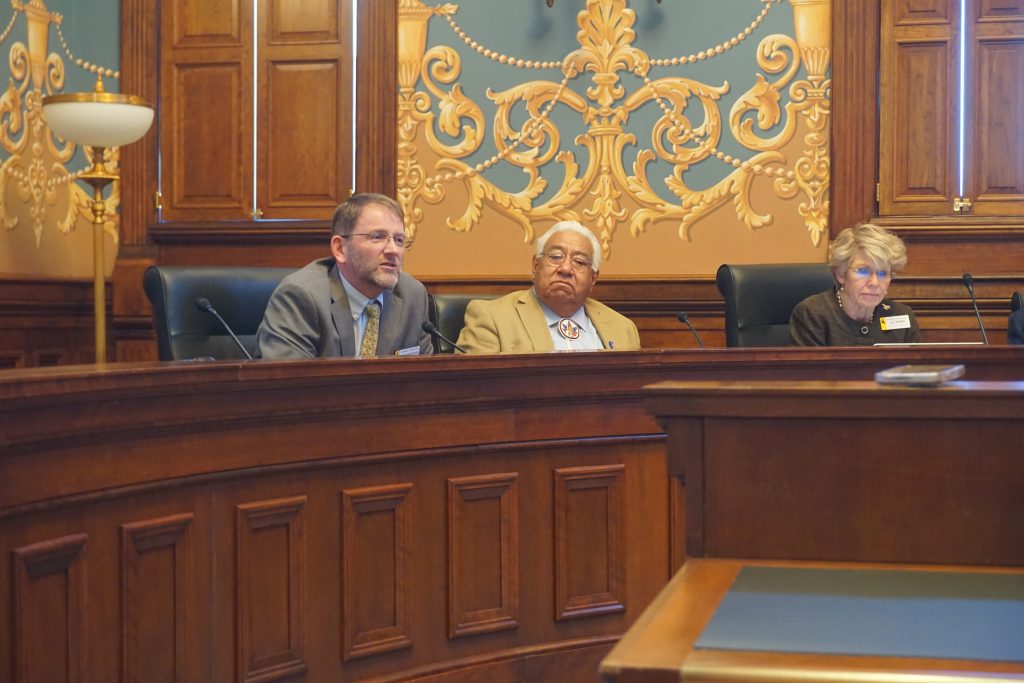Podcast: Play in new window | Download | Embed
Alaska organizations that provide weather and environmental information to mariners and subsistence hunters are bracing for reduced funding.
The cuts have not been approved. But according to a draft budget memo, the Trump administration is considering slashing more than a quarter of the funding for the National Oceanic and Atmospheric Administration in 2026.
Alaska Desk reporter Alena Naiden from our flagship station KNBA has more.
The Alaska Ocean Observing System is one local NOAA program that provides coastal and ocean data to improve the safety of boaters, fishermen, and subsistence hunters.
Sheyna Wisdom, executive director of the organization, says the proposed budget would eliminate the program.
“It would completely shut us down. And we have projects across Alaska. We would be pulling assets out of the water.”
The organization’s projects include supporting Indigenous observers who track changes in their communities, mapping whaling trails, and monitoring harmful algal blooms.
In another project, hunters in Point Hope, Utqiagvik, and Wainwright collaborated with scientists to install buoys at popular subsistence locations to track wave height.
The buoys then provide real-time data via an app about when it’s safe to hunt whales, seals, or walruses.
Steve White is the executive director at Marine Exchange of Alaska.
The organization partnered with the program to install weather stations on vessels, so that other boaters get real-time conditions from remote areas.
He says losing such initiatives would be a huge hit to a state that already lacks weather reporting.
“Up in Alaska, you got to have good weather information. It could determine whether you die or whether you come back, whether you should go out on a boat or not.”
If the proposed changes go through, Wisdom with the Alaska Ocean Observing System says it’s unclear whether the program will have an alternative path to stay operational.

Members of the Resources and Development Committee were joined by Speaker Crystalyne Curley, Eastern Navajo Agency allottees, and Navajo EPA representatives as they met with U.S. Secretary of Interior Doug Burgum.
A Navajo Nation Council delegate is optimistic about meetings this week with the Trump administration in Washington.
Brenda Jesus, chair of the council’s Resources and Development Committee, was among a group of Navajo representatives to hold meetings with U.S. Interior Secretary Doug Burgum, staff with the White House Council on Environmental Quality, and the White House Office of Intergovernmental Affairs for Local and Tribal Governments.
Jesus says the purpose of the trip was to talk with the new administration, advocate for the committee’s priorities, and urged for tribal consultation in Trump administration policies.
The Navajo Nation, located in the Southwest, extends into Utah, Arizona, and New Mexico.
“Navajo Nation has a vast abundance of resources on our Navajo Nation and setting the stage as to Navajo Nation wants to acquire that self-governance, but we would like to continue to hold our federal partners to proper and meaningful government-to-government or tribal consultation.”
Topics of discussion included the Chaco Canyon land withdrawal in New Mexico, which the committee says has stalled key infrastructure for Navajo people like water, electricity, and roads; talks including ongoing problems with abandoned uranium mines; and water access as an urgent need.
The visit by the council members was made about a week after Navajo Nation President Buu Nygren attended a White House event where Nygren showed his support for boosting coal development across the U.S., an action the Trump administration is taking.
Jesus says coal is a sensitive topic and the committee has not taken a position on coal development, but will be meeting on it.
“We need to have a better practice going forward should we go back into the coal or the fossil fuel industry and actually maximize out the benefits that will be coming from this for generations to come.”
Jesus is one of 24 Navajo Nation Council delegates. She says the current council has 18 months of service left and the work they’re doing now is setting a blueprint.
“I just like to continue to have the Navajo Nation prosper just through any development on Navajo Nation and hope that it would be a return to Navajo.”
Get National Native News delivered to your inbox daily. Sign up for our daily newsletter today.

















